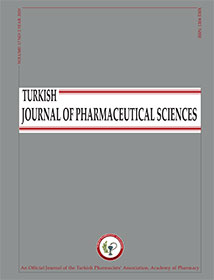
The Turkish Journal of Pharmaceutical Sciences
Yazarlar: Indriana RAHMAWATI Gayuh RAHAYU Diah RATNADEWI Suminar ACHMADI
Konular:-
Anahtar Kelimeler:Fungal endophytes,In vitro culture,Optimization,Light,PH,Quinidine
Özet: Objectives: Quinidine has pharmaceutical importance as an antimalarial, antiarrhythmia, antimicrobial, anticancer, antioxidant, astringent, and bitter flavoring agent. Quinidine is in high demand, yet its production from the bark of the quina tree (Cinchona calisaya) is limited. Quinidine production from quina tree fungal endophytes, namely Aspergillus sydowii, Diaporthe sp., Diaporthe lithicola, Fusarium oxysporum, and F. solani is lower than the quinidine content of the tree bark. This study attempted to increase quinidine production from these fungi. This research aimed to determine the optimum culture conditions for quinidine production from endophytic fungi. Materials and Methods: Quinidine was produced by in vitro culturing of the fungal endophytes in potato dextrose broth (PDB) medium under different culture conditions, i.e., a combination of an initial medium pH of 6.2 or 6.8, with or without light, in a static condition for 21 days of incubation at room temperature. Production under natural daylight in PDB medium without pH modification was used as the control. At the end of the incubation period, the mycelial mass was separated from the filtrate. The dried biomass and chloroform-extracted filtrate were weighed. Quinidine in the extract was analyzed qualitatively and quantitatively using high-performance liquid chromatograph. Results: Quinidine production was affected by both light and the initial pH of the medium, depending on the fungal strain used. A significant increment in quinidine production, approximately 1.1-9.3-fold relative to its respective control was obtained from all fungi under their optimum conditions. Quinidine production in most of the fungi was significantly correlated with their biomass production but not with their extract production. Of those five fungi, F. solani that was cultured in PDB medium with an initial pH of 6.2 and incubated under continuous light produced the highest concentration of quinidine with low biomass. Conclusion: The quinidine production of all fungal endophytes studied was affected by the culture conditions. F. solani is the most promising fungus for use as a quinidine production agent.